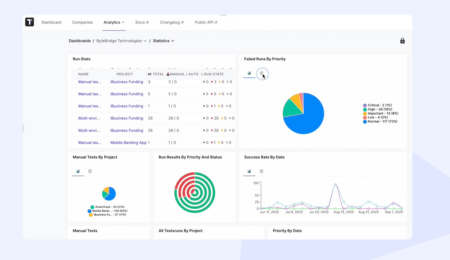In software development, it is very important to have clarity and agreement between business needs and technical work. This is where Behavior Driven Development (BDD), really helps. BDD encourages teamwork in software development. It works by using natural language to describe how an application should behave — in human words. This helps both technical and non-technical team members understand each other better. BDD also uses test automation to check if the software works as expected. This way, everyone knows what to expect and stays informed.
A Deep Dive into BDD Automation Tools
BDD automation tools are important for making the BDD process simpler. They help turn easy-to-read scenarios into automated tests. These tools use Gherkin syntax, which is a clear and friendly language, to define test scenarios that are logical to all stakeholders, and can also integrate with AI-powered GitHub.
There is a variety of BDD automation tools available, including those that support unit testing, ranging from open-source frameworks to complete open source platforms. Each one meets the distinct needs of different development teams. Let’s look at some top tools that help teams use BDD effectively 😀
Cucumber
Cucumber is a partly open-source testing framework for Behavior-Driven Development automation, even the most popular among the available BDD automation tools. It helps improve communication between business stakeholders and development teams. Typically, Cucumber does this through easy-to-understand Gherkin syntax.
QA teams write test scenarios in plain, human-readable language using the Gherkin syntax words to describe system’s behaviour from the end-user’s perspective e.g., Given, When, Then, ensuring that automated tests strictly reflect requirements.
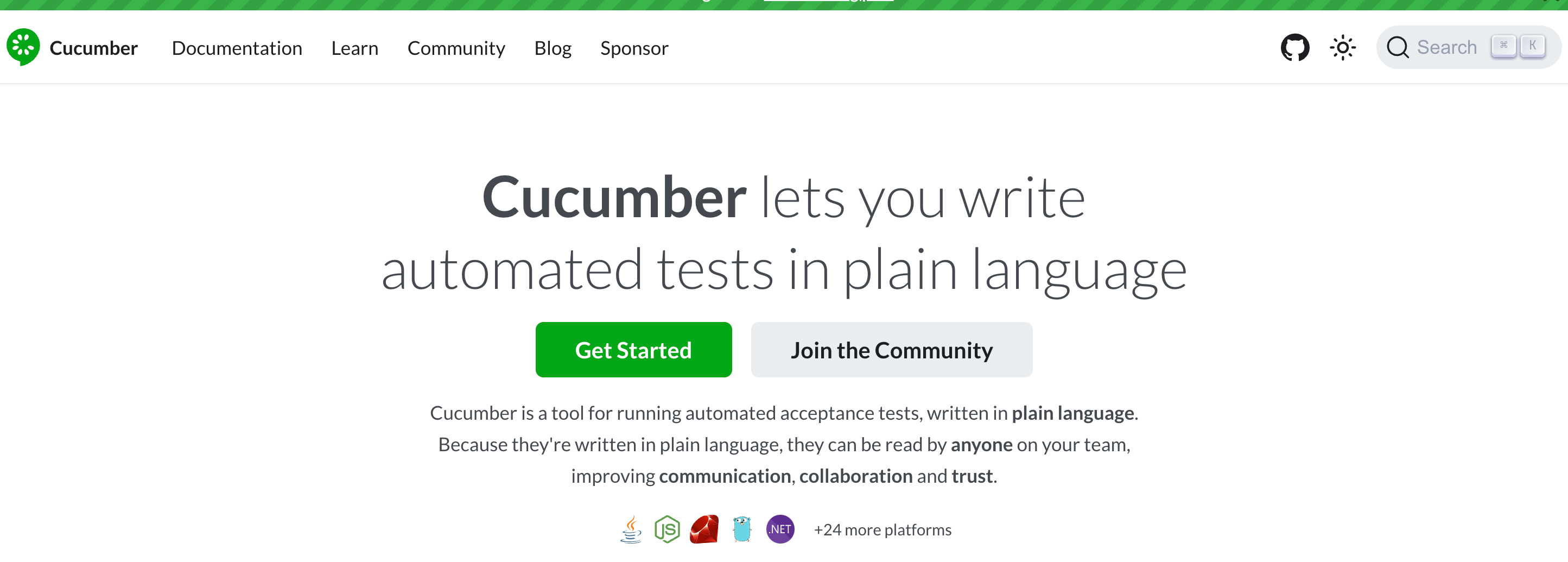
Cucumber integrates well with automation frameworks like Selenium and supports multiple programming languages: Java, Ruby, JavaScript, and Python, including modern test frameworks as Selenium, TestNG, JUnit, Playwright or Cypress. Supports running features in parallel using tools like Cucumber-JVM Parallel Plugin or native support in Cucumber 6+ (Java).
For example, a .feature file in Java with Cucumber-JVM:
@Given("the user is on the login page")
public void userIsOnLoginPage() {
driver.get("https://example.com/login");
}Cucumber seamlessly integrates with GitHub Actions, CircleCI, Jenkins, GitLab CI, and other CI\CD servers, as well as automated regression suites and reporting platforms like Allure, ExtentReports, and Testomat. The last testing tool is interesting because of its capability to connect Cucumber BDD with Jira user stories through the Advanced Jira Plugin. This means teams can easily include BDD in their current testing workflows.
In short, Cucumber offers strong support for automation, scalability, and test maintenance, while bringing test automation closer to business logic. Shared understanding helps to avoid misunderstandings and keeps everyone focused on the same goals.
Thanks to it works with many programming languages and testing tools; a wide range of Cucumber plugins are available on the market, which makes it a good choice for different software development teams.
JBehave
As a pioneering BDD framework in Java, JBehave has opened doors for Behavior-Driven Development in Java projects. With JBehave, developers can write test scenarios in simple text and export them in various formats, including HTML, similar to story runner frameworks. One more time, this makes it easy for Devs, QA testers, and Business Analysts to work together.
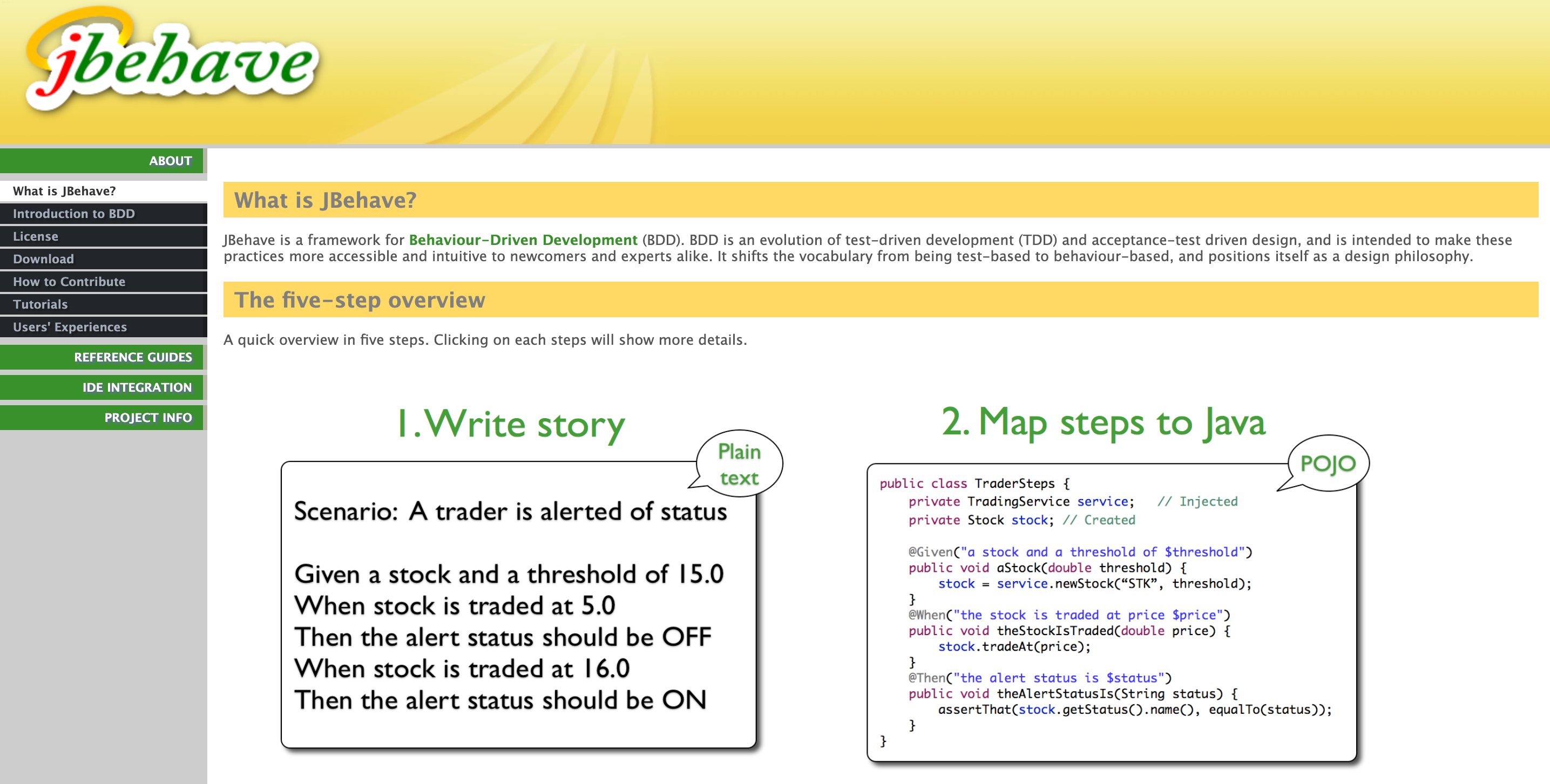
Designed for the Java platform, JBehave fits well with popular testing Java frameworks like JUnit, Maven or Spring. Integrates with Selenium, REST-Assured and CI\CD pipelines, Report and Analytics dashboards. This allows for easy use within current Java development processes.
JBehave uses stories made up of scenarios to show how the application should behave. These stories can be grouped into a full suite, giving a clear view of the system’s functionality from the users’ point of view. You can look, an example of how Step Definitions map to Java methods annotated with JBehave keywords like @Given, @When, @Then in the .story file
public class LoginSteps {
@Given("the user is on the login page")
public void userIsOnLoginPage() {
// implementation
}
@When("the user enters valid credentials")
public void userEntersValidCredentials() {
// implementation
}
@Then("they should see the dashboard")
public void userSeesDashboard() {
// implementation
}
}
The most common use cases for JBehave are enterprise Java applications with strict architectural standards in banking, insurance, and large systems.
Behat
Behat is a strong and friendly framework among various BDD framework tools.
Behat is written in PHP, inspired by Cucumber. It works well with the PHP environment, especially launching dependency-management PHP Composer for tools like PHPUnit, which makes it a top choice for PHP projects. Thus, it is great for BDD testing of PHP projects, including web applications and different platforms like Magento, Drupal, and Symfony.
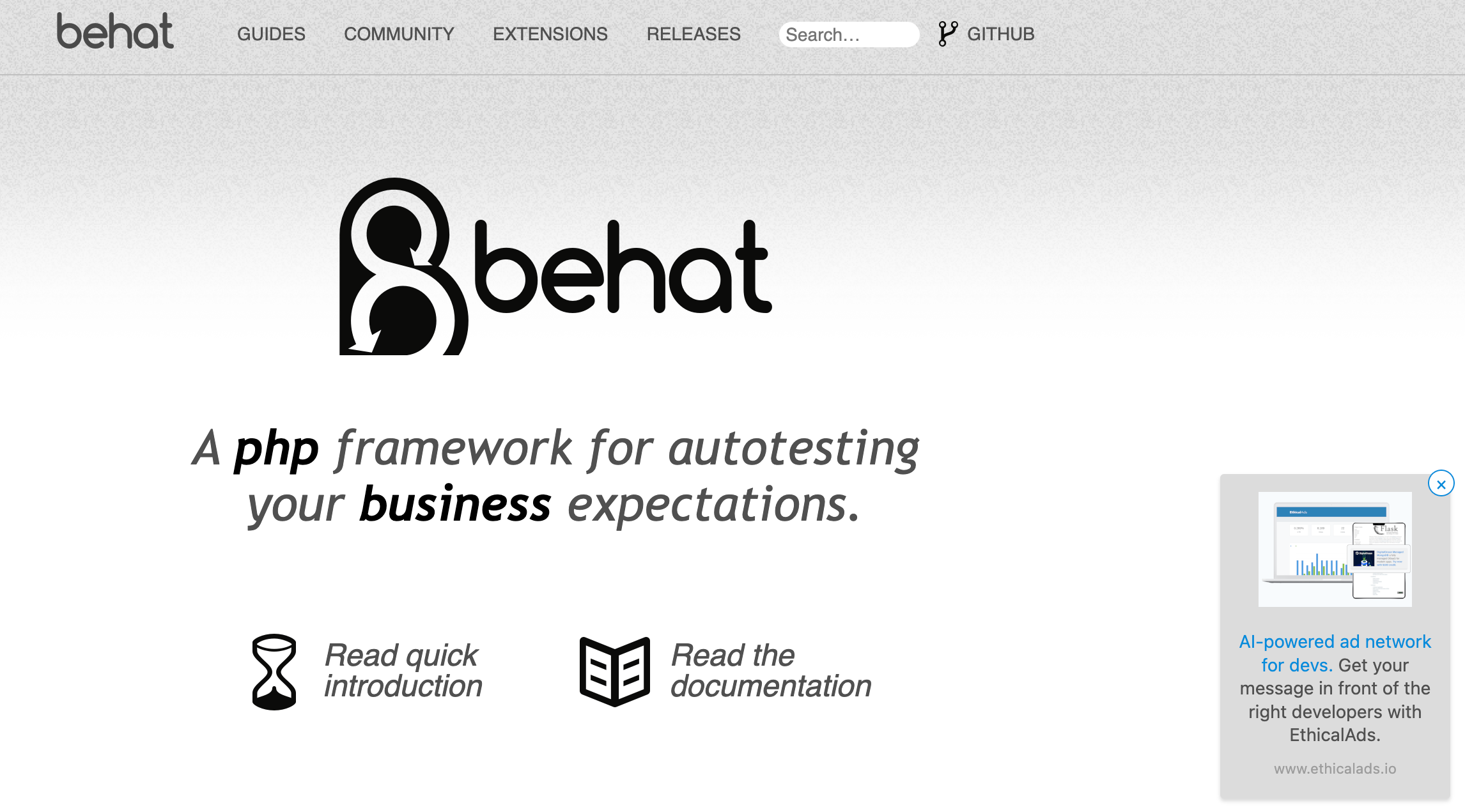
Behat is great for BDD testing for PHP developers.
One of Behat’s best features is its focus on clarity in writing Gherkin BDD scenarios. Example of Step Definition in Behat:
/**
* @Given I am on :page
*/
public function iAmOn($page)
{
$this->getSession()->visit($this->locatePath($page));
}
/**
* @Then I should see :text
*/
public function iShouldSee($text)
{
$this->assertSession()->pageTextContains($text);
}
Also, Behat is very flexible. Developers can adjust the framework to meet their specific testing needs. Browser interactions work within Selenium. Integrates CI\CD tools like GitLab CI, Jenkins, and GitHub Actions. Supports multilingual Gherkin for international teams. There is strong community support, making it simple to find resources, plugins, and help when necessary.
Serenity
Serenity BDD is an open-source test automation framework designed to make writing automated acceptance and regression tests easier and more maintainable.
Serenity BDD is great because it focuses on helpful reports and Living Documentation. We can say that Serenity’s living documentation is even its key feature. It keeps the documentation updated with the code, so when tests run, it automatically changes the documentation. This makes sure it shows the current state of the application.

Serenity creates detailed reports that give useful insights into test results and how the app behaves, providing the ability to track progress easily. Serenity standard HTML report includes: each scenario result, duration and test status, screenshots for every step, historical trends.
Serenity Step implementation:
@Steps
LoginSteps user;
@Given("the user opens the login page")
public void openLoginPage() {
user.opensLoginPage();
}
@When("they enter valid credentials")
public void login() {
user.logsInWithCredentials("admin", "password123");
}
@Then("they should see the dashboard")
public void dashboardVisible() {
user.shouldSeeDashboard();
}
In addition, Serenity operates such categories as Page Objects, Tasks and Actions, which help organize test framework logic with more clarity.
It is evident that Serenity is ideal for complex enterprise-grade software projects, where teams practise Agile methodologies, especially Scrum, and strong well-structured project documentation plays a role
CodeceptJS
CodeceptJS is an open-source Node.js-based testing tool for end-to-end testing of web apps. It makes testing easier by providing a simple API that hides the difficult parts of using different browsers and devices.
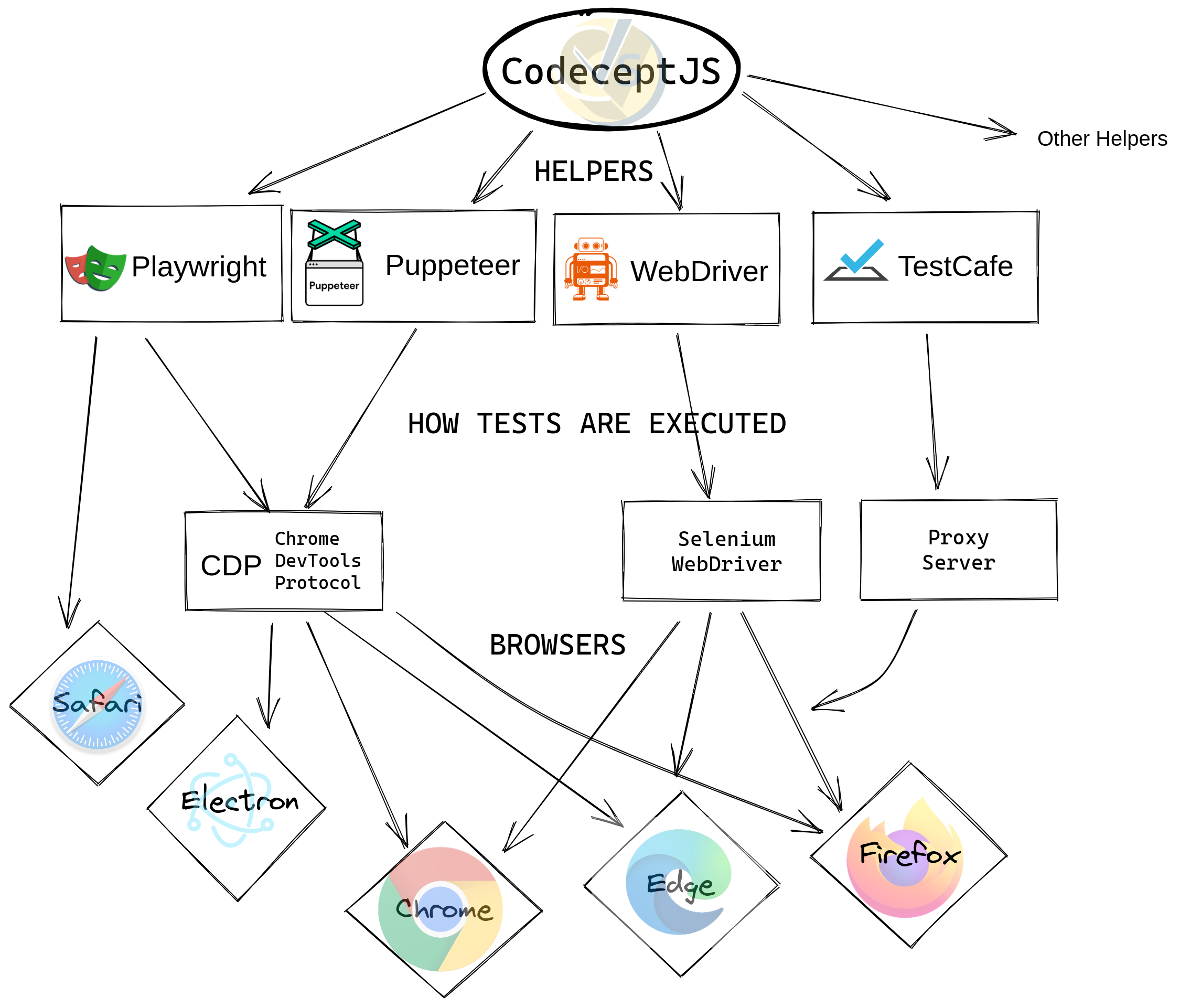
As you can see, CodeceptJS works with different testing frameworks like Cucumber, WebdriverIO, Appium, Puppeteer, Selenium WebDriver and Mocha, last time primarily with Playwright. The CodeceptJS built-in multiple backend allows switching between them without changing the test logic, which is why many developers like to set up and run their tests.
It is designed for writing concise, readable, and high-level tests. It abstracts complex actions behind an intuitive Smart DSL syntax using simple and expressive statements, like: I.click(), I.see(), I.fillField(), which read similarly to Gherkin human instructions. This way, you can check the functionality of the web application thoroughly.
✍ CodeceptJS Playwright Helper test example:
Feature('Login');
Scenario('User logs in with valid credentials', ({ I }) => {
I.amOnPage('/login');
I.fillField('Username', 'admin');
I.fillField('Password', 'password123');
I.click('Login');
I.see('Dashboard');
});
It also carries Page Objects, which help you reuse and maintain code. Supports fast and efficient testing in CI\CD pipelines. Own Real-time Reporting and Analytics through testomat.io test management — both are founded by one team. This makes it a great choice for big and complicated web app projects.
Karate
Karate is an open-source, DSL-based API testing framework that combines API Testing with BDD principles. Karate DSL makes API testing easier. Unlike most Java-based frameworks, it doesn’t require users to write Java code — it is similar to Cucumber scenarios in built-in capabilities. This means developers can write API tests simply. This helps the QA teams understand API tests better.
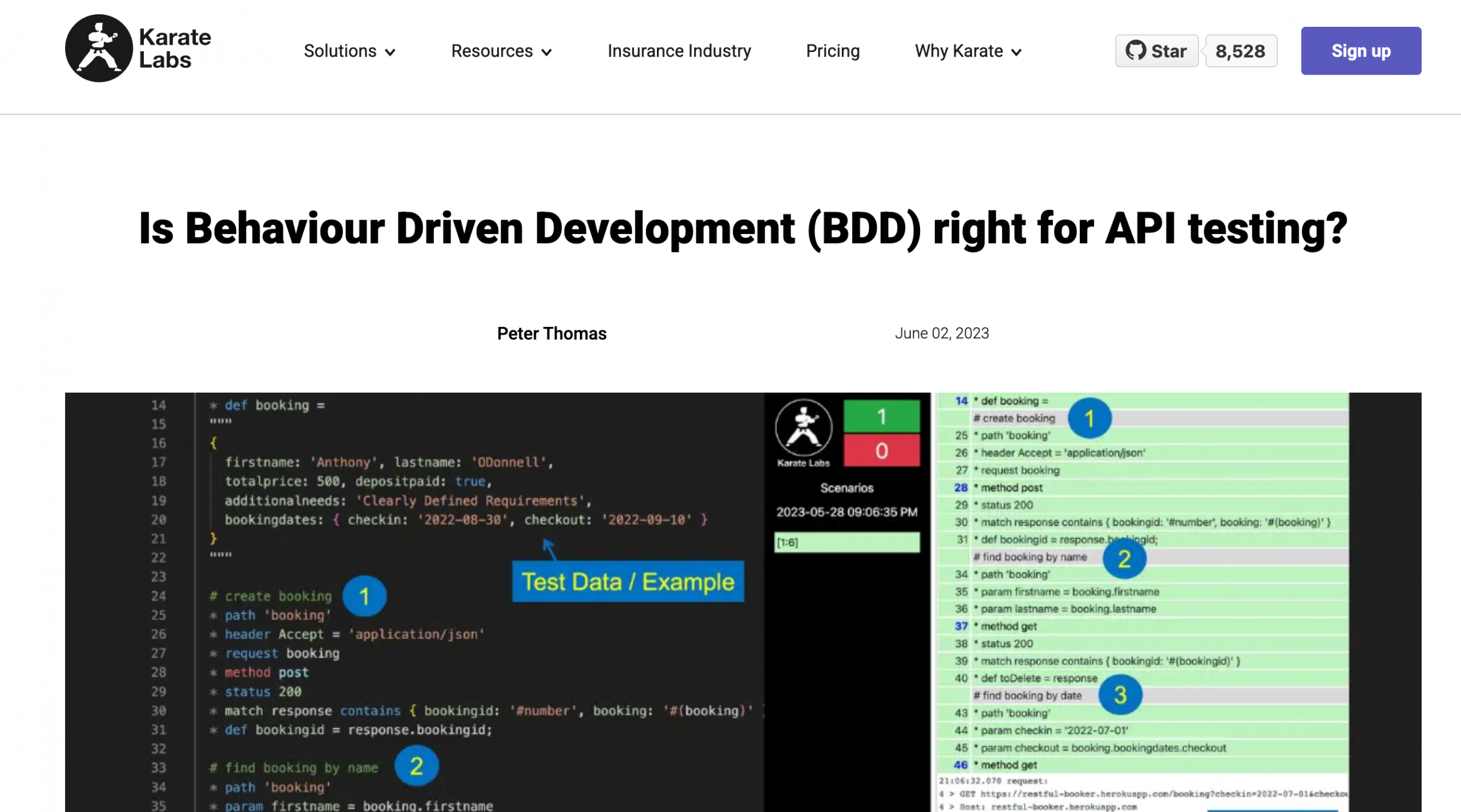
Karate has built-in checks for data-driven testing through loops of test data from JSON, CSV, or tables. This makes it simple to check API responses. So, you can be sure of the functionality and reliability of backend services. Karate can also switch between API and UI testing in one test. This makes it a great choice for testing applications that depend a lot on APIs. Houses REST, SOAP, GraphQL with JSON/XML validation out of the box.
Karate Gherkin .feature file UI test example:
Feature: UI Login test
Scenario: Login with valid credentials
* configure driver = { type: 'chromium' }
Given driver 'https://example.com/login'
And input('#username', 'admin')
And input('#password', 'admin123')
When click('#login')
Then waitFor('#dashboard')
And match text('#welcome') contains 'Welcome'
Also, Karate supports UI testing via Playwright or Selenium. Mocking and stubs are possible for microservice dependencies without extra tools. Works well with CI\CD pipelines. All together, it helps teams automate API tests efficiently. They can add tests to their continuous integration and delivery processes. This ensures that changes to APIs are checked often and reliably.
Key Considerations in Selecting BDD Automation Tools
Choosing the right BDD automation tool is important and needs careful thought. You have to think about:
→ Programming Language Compatibility
→ Tool Integration
→ Match the team’s expertise
→ Community and Documentation
→ Ease of Use
→ Integration Capabilities
Finally, it is important to pick a tool that works well with what you already have and matches your team’s skills and likes.
Alignment with Programming Languages
When you choose BDD tools, make sure they match the required programming languages of your project. This matching helps things go smoothly and lets developers use familiar syntax and tools.
For example, if your project is in Java, JBehave or Cucumber with Java bindings are good options. On the other hand, if you are working on a PHP project, Behat is a great choice.
Connection with existing project toolset
Using a BDD tool that fits your programming language makes the development process better. Developers can use the skills they already have, making it easier to learn the tool. This also helps with writing and managing automated tests.
Community Support and Documentation Availability
Robust community support and good documentation are very important when you start using any BDD tool. Having access to active forums, online groups, and clear documentation helps teams find answers, fix problems, and make the most of the tool.
When looking at BDD tools, check their online communities, forums, and documentation resources. This will help you see what kind of support and information is available. A strong community offers ongoing help and timely updates. It also gives teams a wider pool of knowledge. Good documentation makes learning easier and helps teams use the tool effectively.
Ease of Adoption and Learning Curve
An Intuitive and low-level curve will be beneficial. The ease of using a tool, along with its usability, and how fast people can learn it are important when you bring BDD to a team that may not have much experience. A tool that is simple to learn and has an easy interface can help the team start using it quickly and get more people involved.
Choose BDD tools that have user-friendly interfaces, clear documentation, and helpful tutorials or examples. Think about how complicated it is to set up the tool, write tests, and understand the results. A tool that is easy to learn and use can help new team members join in faster. This encourages a quicker adoption of BDD and allows more people to take part. It’s best to select a tool that matches the team’s skills or provides enough resources to help anyone who may need to learn more.
Integration Capabilities with CI\CD Pipelines
Seamless integration with existing CI\CD pipelines is crucial for maximizing the benefits of BDD automation tools like Selenium. The selected tool should integrate with popular CI\CD platforms like Jenkins, GitLab CI\CD, or Azure DevOps, enabling automated test execution as part of the development workflow.
Seamless integration empowers teams to incorporate BDD tests into their continuous integration and delivery processes efficiently. This automation ensures that tests are run regularly, providing rapid feedback on code changes and enabling early detection of potential issues.
| Language | Test type | BDD Syntax | Integrations | |
| Java, JS, Ruby, Python etc. | UI, API, Functional | Gherkin | Selenium, Appium, CI tools | |
 |
Java |
Functional UI testing |
JBehave DSL Gherkin-like | Selenium, JUnit, CI tools |
 |
PHP | Web UI | Gherkin | Mink (browser), Drupal |
 |
Java | UI, API, Acceptance | Gherkin | JUnit, Cucumber, Jenkins |
 |
JavaScript / TypeScript | UI, API, Mobile | Scenario-style steps | Playwright, WebDriver, REST |
 |
➖ | API, UI, Performance | DSL language based on Gherkin | Gatling, Mocking tools, CI\CD tools |
How to Implement BDD in Your Development Process?
Integrating BDD into your development process takes more than just picking the right tools. It is important to build a team culture that supports BDD. This includes writing good BDD Specifications scenarios using Gherkin and BDD tools for testing all the time.
Teams should also check and improve BDD processes regularly. This helps keep them in line with what your project needs as it changes.
🔴 Remember:
Successful BDD setup depends on teamwork, clear communication, and a focus on delivering high-quality software.
#1 Step: Establishing a BDD Culture within Teams
Creating a BDD culture is more than just using BDD tools at the daily desktop. It is about building teamwork where business stakeholders, developers, and testers come together. They all work to define and create useful software. Start by highlighting the benefits of BDD. Talk about how it can improve communication, cut down on errors, and make software better.
Motivate your QA team members to talk regularly and share knowledge about best BDD practices. You can set up workshops or training sessions to help everyone learn BDD ideas, Gherkin syntax, and the BDD tools you will use. This teamwork will help everyone have a good grasp of BDD concepts.
Make a habit to check and improve your BDD methods regularly. Keep them in line with what your project needs as it changes. It is important to remember that successful BDD depends on teamwork, clear communication, and a promise to create high-quality software for its users.
#2 Step: Writing Effective and Clear Gherkin Scenarios
Writing Gherkin scenarios that work well is key to successful BDD. Keep your scenarios clear and short. This way, everyone involved can easily understand them.
Understandable Given-When-Then format helps to show the conditions needed, the actions taken, and the results expected. Your scenarios should focus on a single behavior, so they are simple and clear.
Work together with both technical and business stakeholders to review and improve the scripts. This collaboration helps make sure the scenarios are accurate and complete. It is also important to check and update scenarious regularly as the application changes. This keeps everything consistent and helps avoid mistakes. By getting good at this, teams can make sure that BDD stays effective and useful.
#3 Step: Leveraging BDD Tools for Continuous Testing
To get the most out of BDD, use BDD automation tools for continuous testing. Connect your chosen BDD tool with your CI\CD pipeline. This way, automated tests will run every time code changes happen.
This feedback loop helps you find issues early and stops problems from coming back. Check out the automation capabilities of your BDD automation tools, like data-driven testing, which can help you simulate different server conditions to boost your testing work. This method lets you run tests with different data sets. Using BDD automation tools powered by AI ensures better coverage and spots unique cases.
Continuous testing helps teams stay confident in the software’s quality. It also makes sure that new features or bug fixes do not cause unintended issues after regression. Regularly look at test results, compare their historical runs and learn from them insights to make the application better and more stable. Keep a spirit of continuous BDD improvement in your testing process.
#4 Step: Measuring Success and ROI from BDD Implementation
Measuring how well BDD works and its ROI means keeping track of important testing metrics and seeing how it affects the Software Development Life Cycle. Focus on things like fewer bugs, quicker delivery cycles, and better teamwork between business and tech teams.
Watch for fewer late-stage bugs in development. This shows that BDD helps find problems early. When there is less rework and quicker delivery, it saves money. This shows the real benefits of BDD.
It is also important to gather thoughts from stakeholders about how BDD helps communication and teamwork. This shows the positive effect of BDD.
By keeping an eye on these areas, teams can show the value of BDD and keep it successful in their organization.
Common Challenges and Solutions in BDD Automation
While BDD has many benefits, using BDD automation tools has its challenges. Teams might fight against change or have trouble communicating between technical and non-technical members. They may also struggle to keep documentation consistent.
By recognizing these challenges early, teams can use strategies to overcome them. This will help make BDD automation implementation smoother and allow them to enjoy all the benefits. Being open about challenges and focusing on solutions is important to get the most out of BDD automation tools in software development projects.
🔥 Overcoming Resistance to Change
Implementing BDD means changing how we think and work. This change can cause some team members to resist since they are used to their old ways. Start by explaining the benefits of BDD clearly. Highlight how it can improve teamwork, software quality, and the success of the project.
Listen to concerns from team members and explain everything clearly. Make sure to provide good training and support so everyone understands BDD and can adapt to the new method.
Encourage teams to try BDD on smaller projects first. This will help them get comfortable before they tackle larger ones. Celebrate early wins and show off the real benefits from BDD automation tools. This will help prove its value and make team members more open to accepting it.
🔥 Bridging the Gap Between Technical and Non-Technical Team Members
Effective communication is very important in BDD. It is key to bridging the gap between technical and non-technical team members. Use clear and simple specifications when defining scenarios. Avoid technical terms that may confuse non-technical stakeholders.
Hold regular meetings or workshops where technical and non-technical team members work together to define scenarios and set acceptance criteria. Visual tools, like diagrams or process flows, can help show scenarios and make them easier to understand.
Keep open communication channels. Use shared documents or online platforms to encourage ongoing talks. This keeps everyone on the same page about the project’s needs and progress. This way of working together helps reduce misunderstandings and ensures software development meets business needs.
🔥 Ensuring Consistent and Up-to-Date Documentation
Maintaining clear and current documentation is very important for long-lasting success in BDD. However, keeping the documentation aligned with the changing code can be tough. You can generate the Living Documentation that some BDD automation tools provide.
These BDD automation tools (Serenity or Testomat test management) update the documentation automatically as tests run. This keeps it in line with the current condition of the application. Even if you use these tools, you should regularly review and update your documents. Periodic checks on your documentation help ensure it is clear, correct, and complete.
Doing this allows you to spot any mistakes or old info early. It is also helpful to set clear rules and responsibilities for documentation. This way, team members can take charge and help keep everything consistent over time.
Conclusion
In summary, using BDD automation tools and a comprehensive test automation tool can change how you develop software. These tools help teams work together better, improve communication, and make testing easier.
Of course, each tool brings its own benefits suited for different programming languages and testing needs. When you pick the right tool for your goals, you should connect it smoothly to your CI\CD processes.
Building a BDD culture in your teams will help you achieve more efficient software development. By tackling issues with good communication and proper documentation, BDD will play an important role in your development plan and enhance the overall development phase. This will lead to ongoing improvement and a positive return on investment over time.
Frequently asked questions
How Does BDD Differ from Traditional Testing Approaches?

BDD is different from traditional testing. It looks at how the system behaves from the user’s view. This method encourages teamwork between business stakeholders and technical teams by using a common language called Gherkin, which includes defining acceptance tests. This way of working helps improve communication, find issues early, and create a product that better meets user needs.
What is BDD vs TDD?

TDD is a technical, developer-driven practice focused on writing tests first to ensure code correctness at the unit level. BDD is an extension of TDD that shifts the focus from technical details to the behavior of the system from the user’s or business’s perspective. At first, BDD uses natural Gherkin language to describe what the system should do, following the Given-When-Then format, and after validates with the BDD automation tool.
What is BDD automation?

BDD automation is the process of automating tests that are defined using BDD practices. BDD automation takes these scenarios and turns them into executable tests. This is done using specialized tools such as Cucumber, Behave, SpecFlow or others, which can interpret the Gherkin syntax and connect it to code written in programming languages like Java, Python, PHP or C#.
